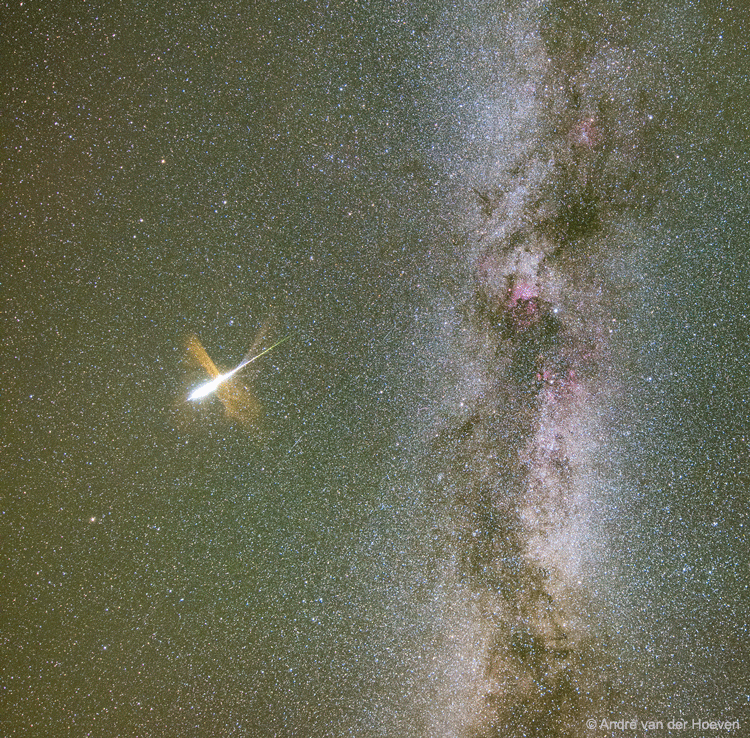Авторы и права: Андре ван дер Хоевен
Перевод: Д.Ю.Цветков
Пояснение:
Примерно через неделю
метеорный поток Персеид
достигнет максимума.
Частички льда и песчинки испещрят небо полосками, испаряясь при вхождении в земную
атмосферу.
Источник этих частичек –
комета
Свифта-Туттля.
Персеиды
наблюдаются каждый год, когда Земля пересекает орбиту кометы
Свифта-Туттля,
обычно это – самый активный
метеорный
поток
в году.
Очень сложно предсказать активность метеорных потоков, однако предполагается, что
в ясную темную ночь наблюдатель
сможет увидеть
метеор каждую минуту.
В этом году
Персеиды
достигнут максимума через несколько дней после
полнолуния,
и тусклые метеоры не будут видны из-за яркого
лунного света.
Метеорный поток
лучше всего наблюдать в
спокойном положении, вдалеке от городских огней.
На фотографии
запечатлен метеор,
взорвавшийся
в 2015 году над
Австрией
около центральной полосы нашей
Галактики
Млечный Путь.
1999 2000 2001 2002 2003 2004 2005 2006 2007 2008 2009 2010 2011 2012 2013 2014 2015 2016 2017 2018 2019 2020 2021 2022 2023 2024 2025 |
Январь Февраль Март Апрель Май Июнь Июль Август Сентябрь Октябрь Ноябрь Декабрь |
NASA Web Site Statements, Warnings, and Disclaimers
NASA Official: Jay Norris. Specific rights apply.
A service of: LHEA at NASA / GSFC
& Michigan Tech. U.
|
Публикации с ключевыми словами:
Perseids - Персеиды
Публикации со словами: Perseids - Персеиды | |
См. также:
Все публикации на ту же тему >> | |
